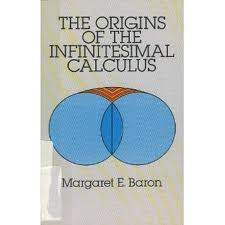

But when the struggle raged in the seventeenth century, the combatants on both sides believed that the answer could shape every facet of life in the modern world that was then coming into being. Whether the continuum is made up of infinitesimals seems like the quaintest of questions, and it is hard for us to fathom the passions it unleashed. What Alexander offers us is a look at how fraught the question was with cultural significance.Īlexander’s thesis is that the question of indivisibles, which may seem to be of interest only to mathematicians and philosophers, became ground zero for the ideological battles over the nature of European society: The infinitesimalists were eventually vindicated by those such as Newton and Leibniz, in whose hands the method led to what we now know of as Calculus. This revival drew battle lines between those who argued for their inclusion into mathematics because of their demonstrable usefulness and those who argued against them on the grounds that they threatened the ordered and reasonable method of mathematics. It was not until the sixteenth century that there was a revival of interest in infinitesimals among European mathematicians.
#Book o infinitesimals free
For instance, if the indivisibles that compose a line segment have zero length, then how can the line segment have non-zero length? On the other hand, if the indivisibles have some non-zero length, why is the length of the line segment not infinite?įollowing the early successes with infinitesimals by such giants as Archimedes, concern for logical precision meant that for two millennia infinitesimals were shunned by mathematicians who created a Euclidean edifice of mathematics free from paradox and ambiguity that they believed “was fixed, orderly, and eternally true” (78). However, the paradoxes articulated by Zeno and others demonstrated that accepting infinitesimals leads to what seem like logical contradictions. Ancient Greek mathematicians who accepted this assertion did groundbreaking work on areas and volumes. The doctrine of infinitesimals states that the continuum is composed of indivisibles, that is, that “every line is composed of a string of points, or ‘indivisibles,’ which are the line’s building blocks, and which cannot themselves be divided” (9). Alexander’s synthesis of interpretive history makes a compelling case, and his book provides an enjoyable and non-technical read for those interested in the history of ideas.


As the subtitle to Infinitesimal suggests, Amir Alexander makes the startling assertion that ground zero of the battle over the shape of the modern world was a seemingly innocuous and abstruse mathematical claim about the nature of lines. Such changes were contested, and from them emerged a new way of perceiving the world. The transition to modernity was shaped by changes in science, politics, religion, economics, and culture. He coined his model ""Non-Standard Anlysis"".Matthew DeLong is Professor of Mathematics at Taylor University. Robinson was the first to show that Leibniz's ideas in fact can be fully vindicated and that they lead to a fruitful approach to classical Analysis. As a result, the theory of infinitesimals gradually fell into disrepute and was replaced by eventually by the classical theory of limits. However, neither he nor his disciples and succesors were able to give a rational development leading up to a system of this sort. As Leibniz argued the theory of infinitesimals implies the introduction of ideal numbers which might be infinitely small or large compared to the real numbers. Both Leibniz and Newton had used the notion of infinitesimals when they developed the Differentail and Integral Calculus in the 17th century. In this book Robinson gave the first rigorous formulation of Analysis using infinitesimals. First edition of this foundational work in mathematics.

Previous owners signature to front free end paper.Otherwise completely clean throughout.


 0 kommentar(er)
0 kommentar(er)
